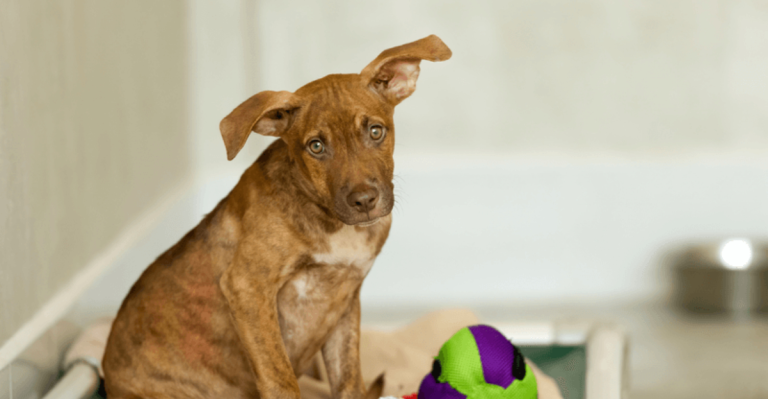13 Signs Your Dog Needs Better Care
You love your dog—you’d do anything for them. You buy the treats, you post the photos, you even talk to them like they’re your therapist.
But caring for a dog isn’t just about belly rubs and chew toys—it’s about tuning into the little things that often get overlooked.
Dogs are excellent at hiding discomfort. They won’t send you passive-aggressive texts when something’s wrong. They’ll wag their tail, curl up beside you, and silently suffer through things you might not even notice.
That’s where this list comes in. These 13 signs are subtle red flags that your pup might not be getting the care they truly need. Not because you don’t love them, but because life gets busy and dogs aren’t exactly fluent in English.
Maybe their nails are a little too long. Maybe they’ve been more anxious lately or their coat isn’t as shiny as it used to be.
These aren’t just minor details—they’re clues. Clues that your dog’s physical or emotional well-being might be slipping through the cracks.
Clues that, with just a few tweaks in routine, could make their tail wag a whole lot harder. And trust us, they’ll thank you in licks.
So, whether you’re a new pet parent or a seasoned dog whisperer, this article is your gentle wake-up call. Because even the most devoted dog owners can miss a thing or two.
And giving your dog better care doesn’t mean doing more—it just means doing smarter.
1. Constant Scratching or Itching
Ever notice your dog scratching more often than wagging its tail? Persistent itching might indicate fleas, allergies, or skin infections—often signs of poor grooming or infrequent vet checks.
Imagine the annoyance of a mosquito bite, but for dogs, this discomfort can last much longer.
Diligent grooming practices can work wonders in alleviating these issues. Regular vet visits ensure early detection of allergies or skin problems. If your dog seems to be itching more than playing, it’s definitely time to investigate further.
Consider how much happier your pet could be without that constant nuisance. A little extra attention and care could make all the difference.
2. Dull or Greasy Coat
A shiny, healthy coat is a hallmark of good canine health. If your dog’s fur looks lifeless or greasy, it could mean poor nutrition or irregular baths. Just as humans feel better after a shower, dogs too enjoy the perks of being clean and well-groomed.
Nutritional deficiencies can also reflect on their fur. High-quality food with the right balance of nutrients can rejuvenate a dull coat. If their coat could speak, it might demand a diet upgrade and a relaxing spa day.
Regular grooming sessions will not only help maintain that lustrous shine but also strengthen the bond between you and your furry companion.
3. Overgrown Nails
Imagine trying to walk with shoes two sizes too big. This is how dogs feel when their nails are overgrown. Long nails make walking painful and are a dead giveaway of neglected grooming habits.
Regular trimming not only prevents discomfort but also helps avoid serious health issues like splayed feet or injured tendons. A simple routine can save your dog from unnecessary pain and keep their paws in top shape.
The sound of nails clicking on the floor might be your cue to check them. A little attention to this detail signifies love and care for your four-legged friend.
4. Bad Breath That’s Not Just “Doggy Breath”
Ever been knocked back by your pet’s breath? Foul mouth odor may mean dental disease, which points to skipped vet visits and lack of oral hygiene. Imagine suffering silently from a toothache—dogs endure this without complaining.
Regular dental check-ups and brushing can prevent serious issues like gum disease and tooth loss. Investing in your dog’s oral care not only ensures fresh breath but also a healthier life.
It’s surprising how something as small as dental hygiene can make such a big difference. Your dog’s happy smiles depend on a clean mouth, free from plaque and discomfort.
5. Constant Lethargy
While dogs do nap a lot, excessive tiredness can signal boredom, depression, or health issues needing attention. Picture a vibrant dog transformed into a couch potato; it’s a sign they’re not mentally or physically stimulated enough.
Engaging games, regular walks, and social interactions are crucial for keeping your dog lively and content. A sudden lack of energy deserves immediate investigation.
Remember, a tired dog should be from a day well spent in play, not from being left unattended. Addressing lethargy can bring back that wagging tail and cheerful demeanor.
6. Sudden Weight Gain or Loss
Fluctuating weight often reflects overfeeding, underfeeding, or underlying illness—all care-related concerns. Imagine a wardrobe that suddenly doesn’t fit; dogs experience similar confusion when their weight changes drastically.
Regular vet consultations and balanced diets can prevent these issues. Monitoring your dog’s food intake and exercise routine is crucial for maintaining a healthy weight.
Being attentive to weight changes is a proactive step in ensuring your dog’s overall well-being. A healthy weight contributes to a longer, happier life for your pet.
7. Matted Fur
Matted fur can be painful and lead to skin infections. They’re usually caused by irregular brushing, especially in long-haired breeds. Imagine wearing a sweater that’s too tight and itchy; that’s how your dog feels with matted fur.
Regular grooming sessions can prevent matting and keep your dog comfortable. It’s also a wonderful opportunity to check for ticks, fleas, and other skin problems.
Keeping your dog well-groomed not only enhances their appearance but also ensures their comfort and health. A well-brushed coat reflects the care you give.
8. Excessive Barking or Whining
Excessive barking or whining could be a sign of stress, lack of stimulation, or unmet emotional needs—not just behavioral issues. It’s like a cry for help, signaling that something is amiss in their environment.
Providing mental enrichment and physical exercise can reduce these behaviors. Interactive toys and training sessions are great ways to engage their minds and satisfy their needs.
Understanding these vocal cues is essential. It means tuning into your dog’s deeper needs and creating a more balanced living environment for them.
9. Unclean Living Environment
Dirty water bowls, smelly bedding, or poop left in the yard too long can seriously impact your dog’s well-being. Imagine living in a cluttered space; it breeds discomfort and unhappiness.
Regular cleaning of your dog’s living environment is crucial for their health. Fresh water, clean bedding, and a tidy yard contribute to a happier pet.
Maintaining a clean habitat reflects the care you have for your pet. A tidy space promotes a healthy, joyful life for your furry companion.
10. Unexplained Aggression or Fearfulness
Behavioral changes often arise from lack of training, socialization, or mental engagement. A once friendly dog turning aggressive or fearful could indicate unmet needs.
Socialization and training are key to curbing these behaviors. Dogs thrive on structure and positive reinforcement to guide their actions.
Recognizing and addressing these changes can help restore your dog’s confidence and happiness. Ensuring they feel secure is an integral part of their care.
11. Skipping Annual Vet Visits
Even if they seem healthy, missing regular check-ups can allow silent illnesses to fester. Vets are like detectives, spotting issues before they become serious.
Regular vet visits ensure vaccinations are up-to-date and health problems are detected early. Your dog’s health is a journey, not a destination.
Preventive care is the best form of love you can offer. It’s about ensuring they stay happy and healthy throughout their lives.
12. Always Left Alone or Crated Too Long
Dogs are social animals. Too much isolation can lead to anxiety, depression, or destructive behavior. Picture spending all day alone without conversation or interaction.
Providing companionship and interaction is crucial for their emotional well-being. Regular playtime and family inclusion foster a joyful dog.
Recognizing their need for socialization is a critical aspect of caring. Ensuring they’re not left alone too long is an expression of love and responsibility.
13. Lack of Daily Exercise
Whether it’s walks, play, or training, a dog with pent-up energy is usually a neglected one—physically and mentally. Imagine having boundless energy with no outlet for expression.
Daily exercise is essential for keeping your dog fit and happy. It’s not just about physical health but also mental stimulation.
Encouraging regular activity reflects the commitment to your dog’s overall well-being. A well-exercised dog is a happy and healthy one.



















